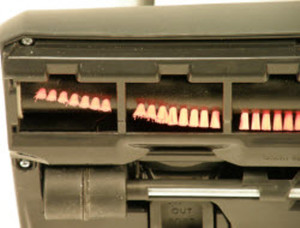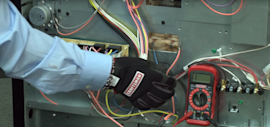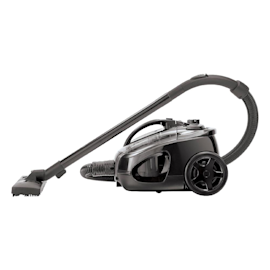5 tips for caring for a vacuum cleaner


Do you ever wonder why your vacuum cleaner just isn’t working like it should? Maybe the suction isn’t as strong as it used to be, or the beater bar doesn’t seem to brush through your carpeting as it should. Here are five simple tips for keeping your vacuum cleaner in good working order.
Check your filters frequently
If the filter is made of foam, you should be able to rinse the filter with clean water. Check washable filters regularly and wash them if needed, or at least every 6 months. Make sure the filter is completely dry before reinstalling it—a wet filter restricts air flow, causing loss of suction.
You can't wash a paper filter, but can extend it's useful life by shaking loose dust and dirt from it.
If you have a HEPA filter, check the instructions in your vacuum's owner's manual. You might need to replace the HEPA filter in your vacuum when the entire surface area of the filter is covered evenly with dirt.
Whatever kind of vacuum filter you have, replace it if it’s worn, damaged or clogged. You can look for vacuum filters here.
Change the bag regularly
You can tell how much dirt is in the bag by feeling it with your hand. If the bag seems half full, it’s time to change it. Never reuse a bag.
Always change the bag after vacuuming carpet cleaners, fresheners, powders, soot, plaster and fine dust. These products clog the bag, reduce airflow and can cause the bag to burst. Failure to change the bag could cause permanent damage to the vacuum cleaner.
If your vacuum is bagless, empty the dirt collection bin frequently.
Inspect the beater bar regularly
For optimal suction and to prevent damage, check your vacuum's beater bar weekly if you use the vacuum daily, or every 2 months if you use it once a week. If hair or debris has collected in the beater bar—also called the agitator or brush roller—remove it with your fingers, or use a scissors if hair is wound tightly. Check the end caps of the beater bar for hair and debris as well.
Clean and lubricate the bearings in end caps as needed. If the bearings or brushes are worn out, replace them.
Check the nozzle
If you use a floor nozzle designed for hard floors, check the nozzle opening for trapped dirt and debris. Clean the nozzle opening with a soft cloth to remove any built-up dirt that could potentially scratch your hardwood floors.
Keep the vacuum clean
Remove clogs from the hose after each use. Use a soft cloth to wipe away dirt and debris that have built up on air passages, filter covers and the brush roller housing.
For more tips on troubleshooting problems with your vacuum, including step-by-step instructions on common vacuum repairs, check out our vacuum DIY repair help section.
Most common symptoms to help you fix your vacuum cleaners
Choose a symptom to see related vacuum cleaner repairs.
Main causes: damaged vacuum hose, clogged motor air filter, bad suction motor…
Main causes: weak suction motor, vacuum bag is full, clog in suction air path, dirty exhaust filter, leaky vacuum hose…
Main causes: broken drive belt, damaged brush roll, tripped brush roll motor overload, bad brush roll motor, wiring fail…
Main causes: lack of power, bad power cord, drive motor failure, wiring failure…
Most common repair guides to help fix your vacuum cleaners
Effective articles & videos to help repair your vacuum cleaners
Use the advice and tips in these articles and videos to get the most out of your vacuum.

Get answers to frequently asked questions about Sears and Sears PartsDirect.…

Learn how to use a multimeter to check for wiring problems in an appliance that's not working…

Find the answers to frequently asked questions about vacuum cleaners.…